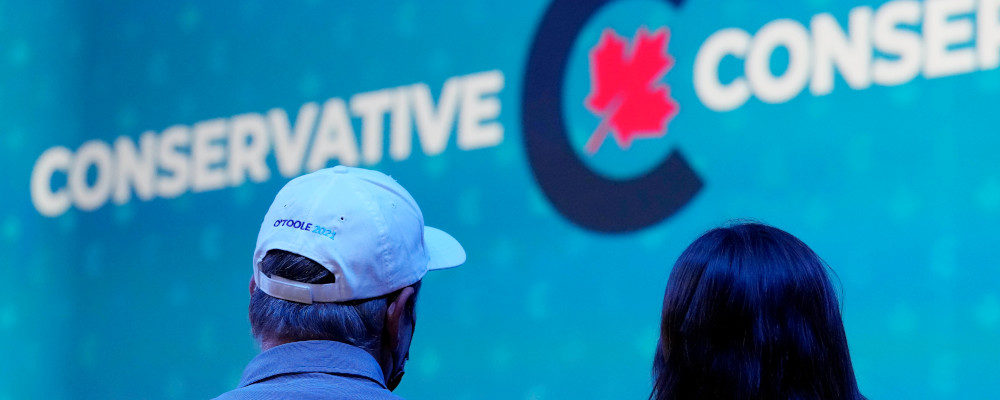The causes of the Liberal victory in 2021 were almost exclusively situational, related to the pandemic generally and vaccine politics specifically. These advantages will dissipate with time.
There are three structural problems for their rivals, the Conservative Party of Canada, which will not go away with time, however.
The first is Liberal voter efficiency. It’s difficult to overstate the strength of Liberal voter efficiency, especially in Ontario.1“Consider the results of the 2021 election. This time the Liberals actually lost even the popular vote. They got 33% compared to the Tories’ 34% but will get to form the government because they spread their vote more “efficiently” over the country’s 338 ridings. The Tories racked up huge majorities in a limited number of western ridings, winning just 119 seats, while the Liberals managed to snaggle just enough votes to win in more different ridings, winning 158 seats.” https://www.halifaxexaminer.ca/featured/canada-voted-but-your-vote-may-not-count-again/ Even a fraction of a percent increase for the Liberals or decrease for the CPC resulted in additional Liberal seats. For the opposite to occur, Conservatives had to gain more than a point, otherwise they were simply winning seats they already held by greater margins. Over the course of the campaign, we saw a small CPC seat lead (it was never large) winnow away to nothing with virtually no change in the top-line national vote intent numbers.
Conservatives unquestionably made progress in this regard. For the first time since 2011, the share of the CPC vote went up. Although the seat count is virtually identical to 2019, the Conservative vote distribution was far more efficient. Almost every region of Ontario except the city of Toronto was “in play,” something that was certainly not the case in 2019. Although they failed to crack the 905, they came close.
The second structural issue is party identification as a voter driver. The CPC starts every election at a disadvantage as more Canadians self-identify as Liberals than Conservatives. Party identification is the political equivalent of corporate brand loyalty. For the voter, it represents an attachment that is deeper than the leader or positions of the day. If you want a vivid example of Liberal brand strength, look to Spadina-Fort York. Here, the Liberal candidate managed to eke out a victory, despite having been disowned by Trudeau.2Expelled Liberal candidate says he’ll sit as an Independent as angry voters call for byelection https://www.cbc.ca/news/politics/undecided-races-2021-federal-election-1.6185685 He won because his sign was red and was emblazoned with a Liberal logo.
There is an adage among Conservative strategists: “The Liberals don’t win by beating Conservatives. They win by beating the NDP.”
The third problem—and the most vexing—is progressive tactical voting. In the final-week polling, the CPC campaign found that 39 percent of those who intended to vote for the NDP would vote for the Liberal Party instead if it meant preventing the Conservative Party from winning in their riding. This meant that, even while the CPC was in a good position earlier in the campaign, there was always a significant risk that limited tactical voting could deliver the Liberals a victory. The results show that a non-trivial amount of the late swing in the election can be attributed to this. In the 30 seats where the Conservatives were closest to victory, the NDP underperformed in 25 seats compared to their forecast result. In the closest seats, such as Sault Ste. Marie, they underperformed by nearly 10 percent, suggesting significant tactical voting likely lost the CPC those seats.
Why in election after election are Liberals able to galvanize progressive voters? Why, time after time, does the NDP vote crater to the Liberal’s benefit in the final days of the campaign?3Post election, NDP grapples with what went wrong https://www.cbc.ca/news/politics/ndp-post-2021-federal-election-review-1.6187158 The research is clear: 25 percent of Canadians who considered voting for the Conservatives believed “the party has not made enough progress on social issues I care about.” Old negative brand attributes, especially among suburban voters, persist and must be overcome. Focus group participants still describe the party as “corporate, American, and old-fashioned.” As the suburbs “urbanize”—a trend all over the Western world4Remote work is bringing the city to the suburbs https://www.vox.com/recode/22714777/remote-work-from-home-city-suburbs-housing-traffic—the CPC is in danger of becoming the party of rural Canada.
One factor which was not decisive was the People’s Party of Canada (PPC). On the face of it, the rise in support for the PPC provides an easy answer. We shouldn’t dismiss this. The PPC cost the CPC several seats and they can’t afford to lose any.
But “bringing home” PPC voters isn’t a path to victory. Thirty-three percent of PPC voters came from the CPC, certainly enough to hurt the Conservatives, but not decisively. Even if it was to absorb 50 percent of PPC voters, the CPC wouldn’t close the gap on the Liberals. There’s no question that the rise of the PPC was directly tied to the rise of COVID and vaccine politics. There is also considerable evidence that the PPC vote was ideologically diverse. Thirty percent of its support came from those who previously voted Liberal, BQ, NDP, or Green. Conservatives cannot win by simply absorbing the PPC vote. More importantly, the PPC voter does not align with public opinion on any key issue. A play for PPC voters risks alienating most Canadians and a large percentage of CPC target voters (who are all much closer to the centre than card-carrying Conservatives).
I am confident about Conservative prospects in the next election. In September, the CPC won on every economic and pocketbook issue. In every federal election in my lifetime, that’s been enough to win. It surely will be again. But this is about more than winning the next election.
Eventually, the timing and circumstances will be right. Eventually, people will tire of the Liberals and want a change. Eventually, the NDP will get their act together. If Conservatives want to contest the Liberals’ status as “Canada’s Natural Governing Party,” however, it’s the structural, not situational, challenges that must be overcome.




